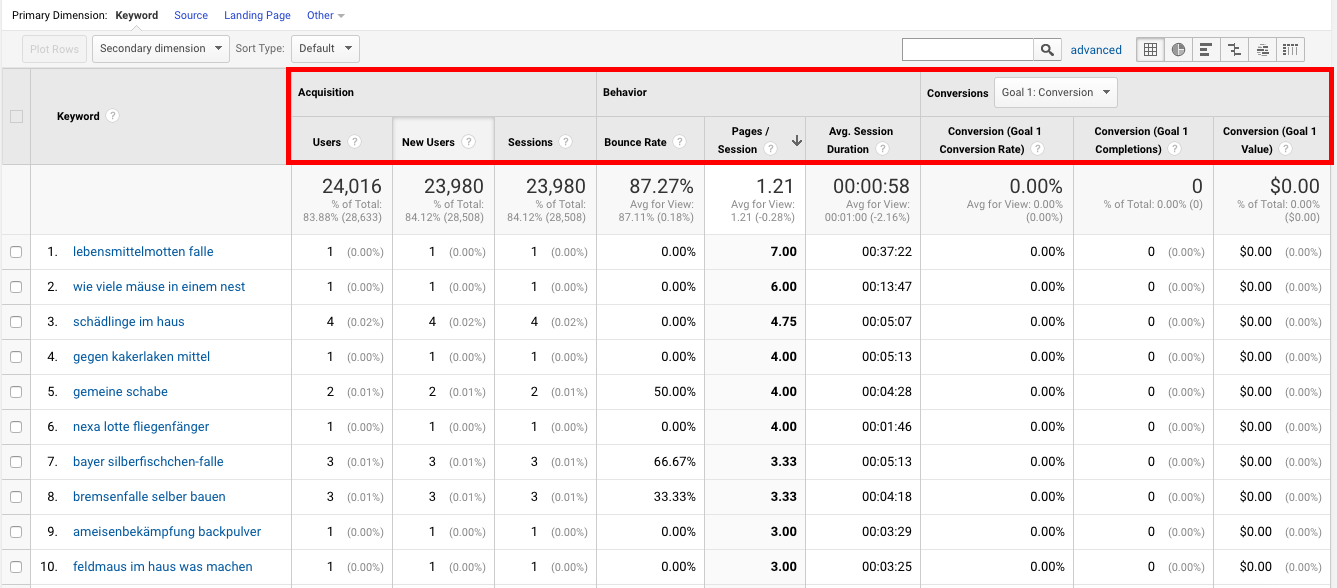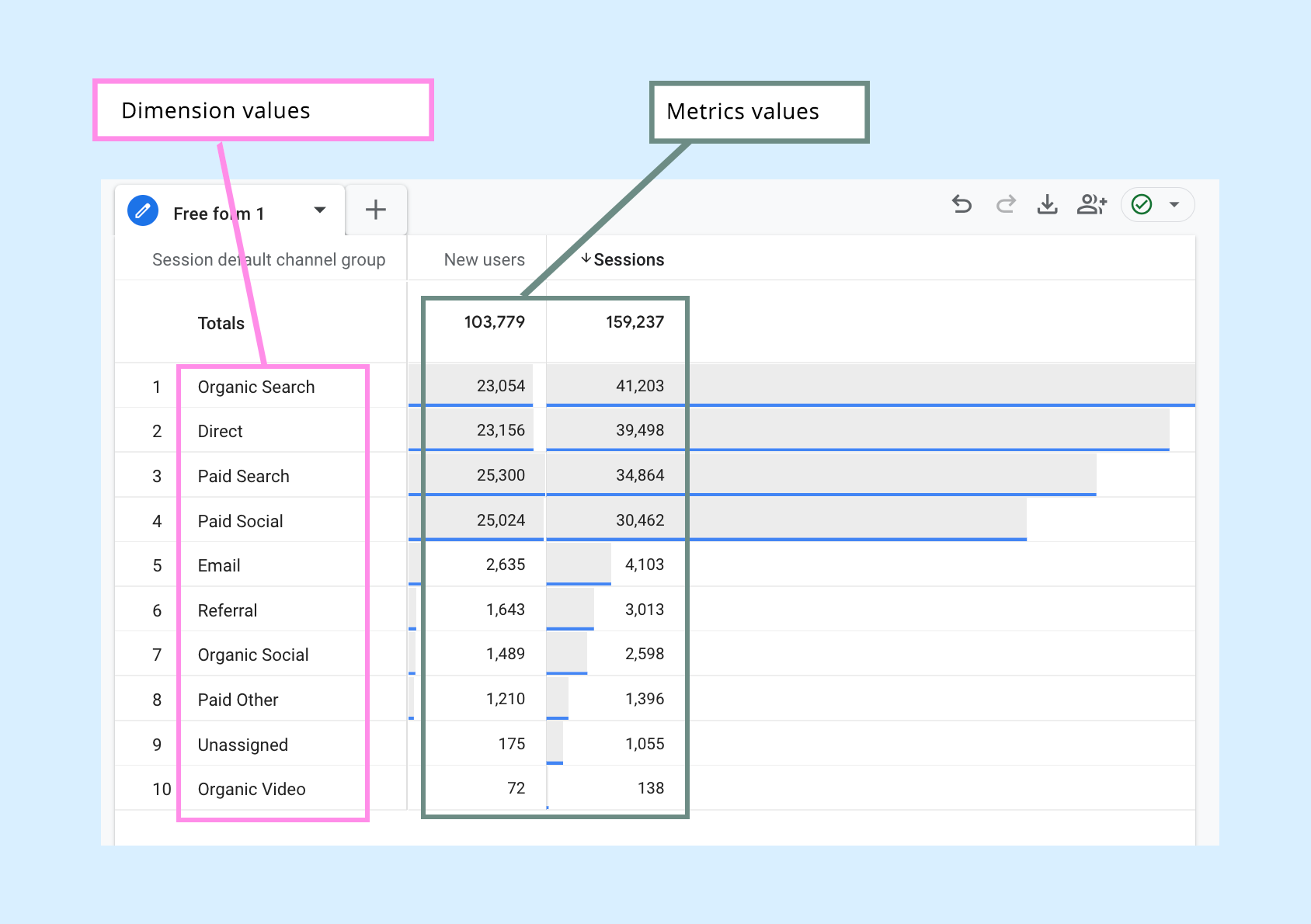Improving Data Accuracy: Google Analytics Secondary Dimension Insights
Improving Data Accuracy: Google Analytics Secondary Dimension Insights
Blog Article
Optimizing Your Digital Approach With Second Measurement Analytics: a Comprehensive Overview
In the world of digital approach, the use of secondary measurement analytics can use an extensive understanding of customer habits and web site efficiency. By delving deeper into the layers of data beyond the main metrics, businesses can uncover beneficial understandings that lead the method for critical decision-making and improved efficiency.
Understanding Second Dimension Analytics
Comprehending Secondary Measurement Analytics provides an important insight right into the innovative analytical devices used in modern information evaluation practices. These analytics dive deeper than main dimensions, offering an extra thorough understanding of information patterns and fads. By incorporating second measurements, analysts can segment and filter information to discover covert understandings that may not be noticeable with primary analysis alone.
Secondary Dimension Analytics enables a much more granular exam of information by presenting added parameters that can be put on the primary measurements - secondary dimension. This approach permits for an extra nuanced evaluation of numerous information points, resulting in an extra extensive evaluation of complex datasets
Additionally, Secondary Measurement Analytics plays a substantial function in improving information visualization techniques. By integrating secondary dimensions right into aesthetic depictions, such as charts or graphes, experts can provide information in an extra detailed and helpful fashion, making it simpler for stakeholders to make and realize vital insights educated choices based upon the information presented.

Applying Additional Measurements Properly
Using second dimensions tactically improves the deepness and accuracy of information analysis procedures, permitting a lot more exact insights and educated decision-making. When executing secondary measurements efficiently, it is important to initial recognize the essential metrics that line up with your particular goals and purposes. By choosing one of the most pertinent additional measurements, such as demographics, behavior, or innovation, you can tailor your evaluation to extract purposeful understandings.
Moreover, arranging and structuring your additional dimensions in a sensible manner within your analytics platform can streamline the data interpretation procedure. secondary dimension. This involves categorizing dimensions based on their relationships and importance to the main metrics being assessed. Creating custom-made reports or control panels that incorporate these second dimensions can likewise facilitate an extra thorough understanding of customer interactions and habits
Additionally, consistently assessing and adjusting your additional dimensions based upon the progressing requirements of your electronic strategy is essential for maintaining the relevance and efficiency of your information analysis efforts. By continually optimizing using additional dimensions, you can maximize the energy of your analytics devices and drive informed decision-making within your organization.
Studying Information for Actionable Insights

To start the process of assessing information for actionable understandings, it is important to establish clear purposes and key efficiency indications (KPIs) that straighten with the organization's goals. By defining what success looks like for the details metrics being evaluated, it ends up being simpler to identify significant patterns and trends that can notify decision-making.
Additionally, making use of tools such as division and comparison evaluation can offer added context to the information, enabling even more nuanced understandings to be attracted. By breaking down data right into smaller, much more workable subsets, companies can uncover concealed chances and locations for enhancement that may not be evident when taking visit this site a look at the data as a whole.
Optimizing Digital Strategy With Findings
Enhancing digital approaches with workable insights gleaned from information analysis is important for accomplishing optimal performance in today's competitive landscape. As soon as useful findings have actually been drawn out from the data, the next action is to leverage these understandings to optimize electronic strategies properly. One vital facet of this optimization procedure is the recognition of trends and patterns that can direct decision-making and resource appropriation.
By assessing the information searchings for, services can identify locations of toughness and weakness within their electronic technique. This information can then be used to refine marketing campaigns, enhance customer experience, and drive overall efficiency improvement. If the data exposes a specific market team that is extremely engaged with particular types of content, services can customize their approaches to much better target and cater to this audience section.
Additionally, maximizing digital method with findings additionally entails continual tracking and assessment to make certain that the implemented modifications are generating the desired results. By iteratively improving strategies based upon data-driven understandings, services can remain in advance of the competition and adjust to the dynamic digital landscape properly.
Measuring Success and Iterating
Determining success in electronic strategy implementation involves evaluating crucial efficiency indications to gauge the performance of methods and techniques find more deployed. This analysis is essential in figuring out the effect of the electronic efforts on the overall service objectives. By tracking metrics such as web site traffic, conversion rates, click-through prices, and engagement degrees, organizations can analyze the efficiency of their electronic campaigns and make data-driven choices for enhancement.
As soon as the information has actually been collected and assessed, it is vital to iterate on the techniques based on the understandings acquired. This iterative process involves making adjustments to the electronic techniques to optimize performance consistently. By determining what is working well and what requires improvement, services can refine their digital approach to enhance results. This cyclical approach of determining, evaluating, and iterating is fundamental to making the most of the effectiveness of electronic campaigns and guaranteeing that they align with the company's goals and purposes. Inevitably, constant surveillance and refinement are vital to staying affordable in the ever-evolving digital landscape.
Conclusion
In verdict, including secondary measurement analytics into your electronic technique can give useful insights and enhance decision-making. By effectively executing and assessing data, companies can maximize their electronic techniques for success. It is important to constantly gauge success, make necessary adjustments, and iterate on the method to remain affordable in the digital landscape. Using secondary measurement analytics is a powerful device for making best use of the influence of your electronic initiatives.
Recognizing Additional Dimension Analytics offers a vital insight right into the advanced analytical tools utilized in modern information analysis methods. These analytics delve deeper than main dimensions, supplying an extra comprehensive understanding of information patterns and fads. By integrating secondary dimensions, analysts can sector and filter data to uncover covert insights that may not be obvious with main evaluation alone.
Utilizing these details second dimensions tactically boosts the deepness and precision of information analysis procedures, permitting for extra accurate insights and educated decision-making.In addition, organizing and structuring your additional measurements in a logical manner within your analytics platform can simplify the data analysis process.
Report this page